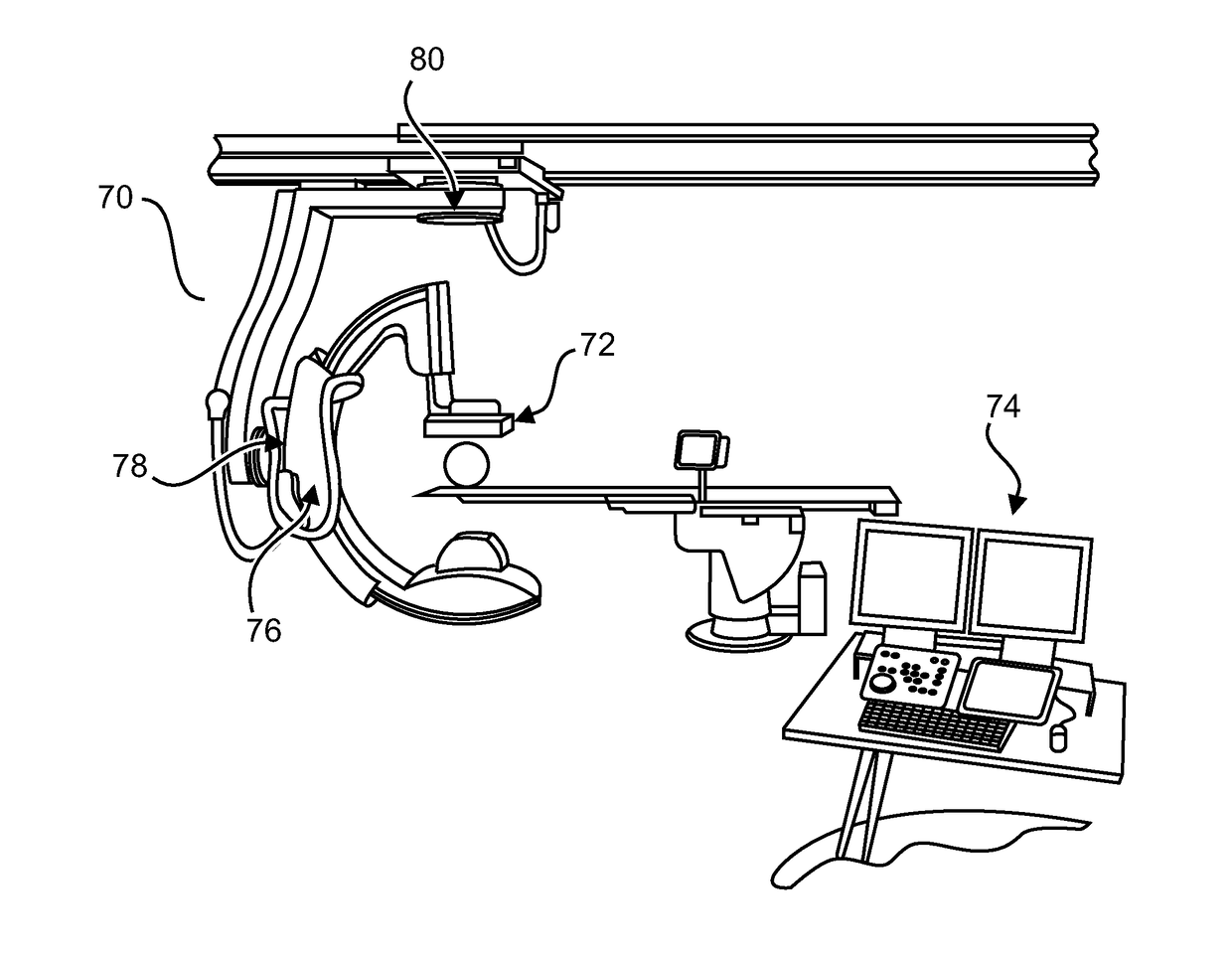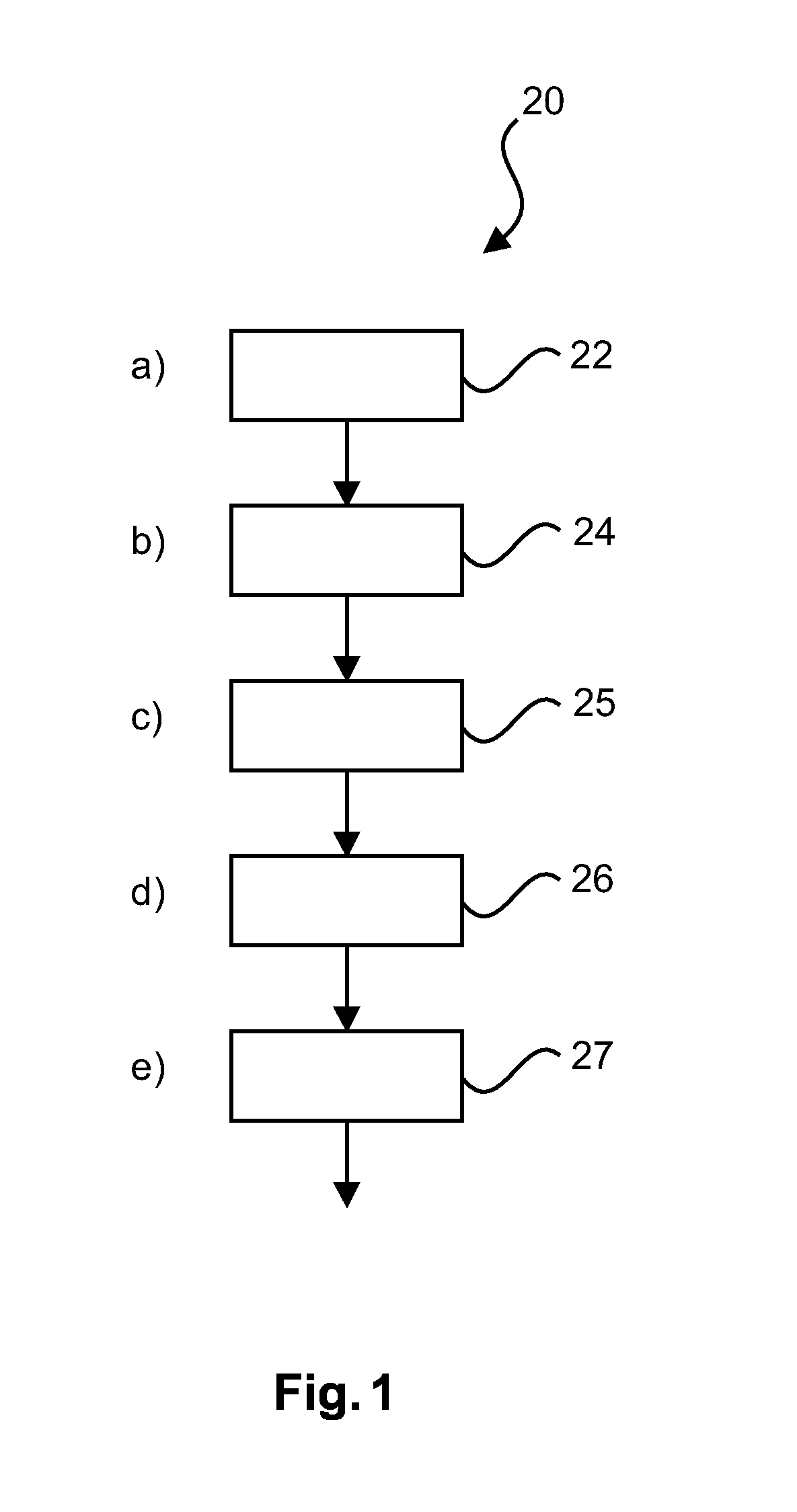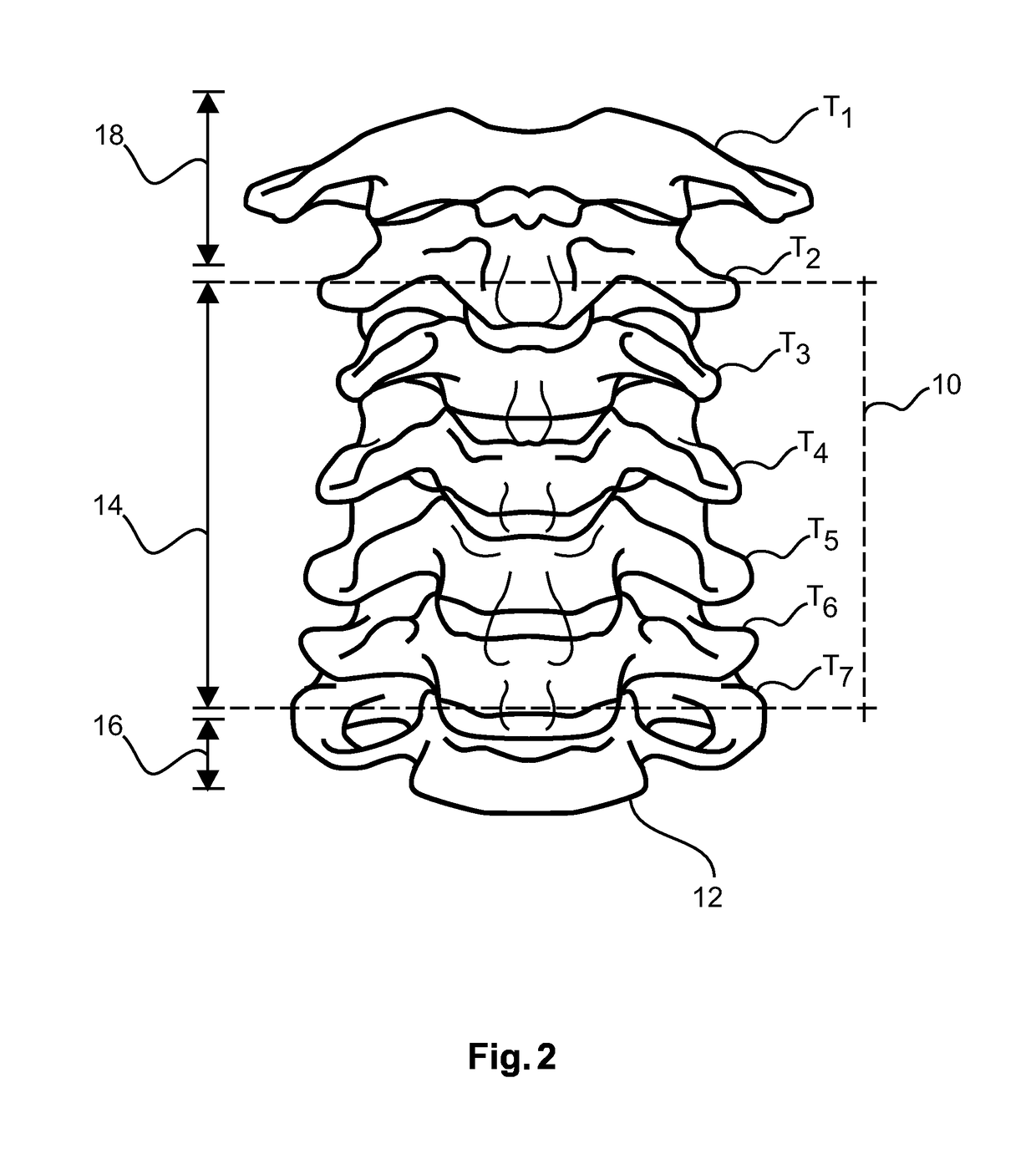Vertebral feature identification
a technology of characteristic vertebrae and feature identification, applied in the field of 3d characteristic vertebrae feature identification devices, can solve the problems of difficult identification of contiguous vertebrae, inability to display the entire spinal column, and difficulty in assessing 3d differences from such projections, etc., to achieve the effect of improving techniqu
- Summary
- Abstract
- Description
- Claims
- Application Information
AI Technical Summary
Benefits of technology
Problems solved by technology
Method used
Image
Examples
Embodiment Construction
[0030]When performing minimally invasive spinal interventions, it can be difficult to identify the correct vertebral level of a spinal column. Usually, the imaging modality is intra-operative fluoroscopy, and this modality has a restricted field of view. Identifying neighbouring (contiguous) vertebrae is difficult, because such contiguous vertebrae are very similar in shape to each other. Displaying the entire spinal column is not feasible. In addition, the 2D fluoroscopy only shows 2D projections, and it is difficult to assess 3D differences from such projections. Therefore, only a few vertebrae of the spinal column are visible at one time. Identification of a specific vertebral level can be misleading if a medical professional performing the spinal intervention miscalculates the number of vertebral levels. Such a miscalculation could originate from confusion, over which vertebral level appears at the boundary of the field of view of the fluoroscopy imager's field of view. Vertebra...
PUM
 Login to View More
Login to View More Abstract
Description
Claims
Application Information
 Login to View More
Login to View More - R&D
- Intellectual Property
- Life Sciences
- Materials
- Tech Scout
- Unparalleled Data Quality
- Higher Quality Content
- 60% Fewer Hallucinations
Browse by: Latest US Patents, China's latest patents, Technical Efficacy Thesaurus, Application Domain, Technology Topic, Popular Technical Reports.
© 2025 PatSnap. All rights reserved.Legal|Privacy policy|Modern Slavery Act Transparency Statement|Sitemap|About US| Contact US: help@patsnap.com



